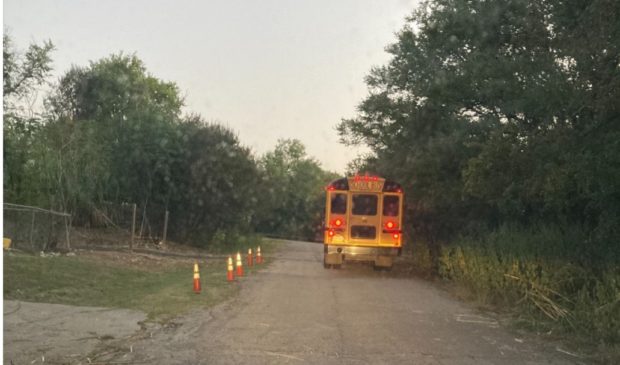Newsletter Signup
The Austin Monitor thanks its sponsors. Become one.
Most Popular Stories
- Parks Board recommends vendor for Zilker Café, while voicing concerns about lack of local presence
- City leaders evaluate surprising ideas for water conservation
- Office slowdown sparks new downtown housing ambitions
- Audit: Economic official granted arts, music funding against city code
- Downtown Historic Resource Survey eyes seven new districts eligible for designation
-
Discover News By District
Popular Whispers
Sorry. No data so far.

Photo by city of Austin. A photo of Rogers Lane, submitted by a neighbor, shows how narrow it is.
ZAP opposes denser homes on substandard Rogers Lane
Wednesday, November 10, 2021 by Jonathan Lee
What should come first, development or the infrastructure to support it? That was the main question the Zoning and Platting Commission wrestled with last Tuesday in a Northeast Austin zoning case.
The case concerned a request to rezone an acre of land at 5417 Rogers Lane from Single-Family – Standard Lot (SF-2) to Townhouse & Condominium (SF-6) zoning in order to build up to 10 units.
Neighbors say more homes would only exacerbate their mobility woes, since the only access to the site is a steep, narrow road.
“It doesn’t make sense to me to build densely populated neighborhoods, when we are already facing an existing mobility problem,” said Maria Bowen, the primary speaker in opposition. Bowen explained that the road is unsafe for pedestrians and inconvenient for motorists, who have to pull over to allow other cars to pass. “Our road is just not equipped for a lot of vehicles.”
Beyond transportation concerns, Bowen feared the rezoning would “significantly diminish our quality of life, shatter our tight community of 27 families, and dare I say even result in our displacement.” She also worried that denser housing could make the neighborhood less safe, “because housing that is so close to each other somehow always brings crime.”
Victoria Haase, representing the applicant, said that the lack of infrastructure should not stop development. “Development brings the infrastructure … and while it may be piecemeal, eventually it will get to the point where it’s a complete system.” Haase also argued that the city can’t afford to oppose new homes: “We are in a housing crisis; we don’t have enough houses.”
The rezoning faces a valid petition, with owners of 47 percent of the property area within 200 feet of the site formally opposed. This means the case needs a nine-vote supermajority at City Council for approval.
Much of the commission sympathized with the neighbors’ concerns and opposed the rezoning. “I feel like that infrastructure should come first,” Commissioner Jolene Kiolbassa said. Commissioner Betsy Greenberg moved to approve SF-6 zoning, but with a conditional overlay capping the tract to three units – seven less than proposed. That vote passed 6-3.
Those in the minority emphasized the city’s housing shortage. “There’s going to be issues associated with every undeveloped piece of land we try to put homes on,” Commissioner Hank Smith said. “But we are in a housing crisis, and we have to build more homes.” Smith originally moved to approve the rezoning, but only two other commissioners voted in favor.
Chair Nadia Barrera Ramirez pushed back on claims that the street is dangerous: “This street is actually safer than a wider street, because it forces you to slow down,” she said. Barrera Ramirez, along with Commissioner Timothy Bray, were in favor of the rezoning.
Commissioner Roy Woody, often a swing vote in housing cases, sided against denser housing this time. “It’s just that that road, Rogers Lane, to me doesn’t look safe at all in order to put more housing like that,” he said. “It’s like the neighborhood has kind of been forgotten.”
The Austin Monitor’s work is made possible by donations from the community. Though our reporting covers donors from time to time, we are careful to keep business and editorial efforts separate while maintaining transparency. A complete list of donors is available here, and our code of ethics is explained here.
Posted In: Zoning, District 1
You're a community leader
And we’re honored you look to us for serious, in-depth news. You know a strong community needs local and dedicated watchdog reporting. We’re here for you and that won’t change. Now will you take the powerful next step and support our nonprofit news organization?


